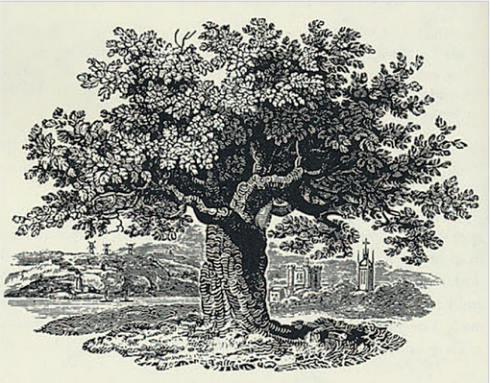William Nixon was the tavernkeeper in Locktown in 1861 when Benjamin Ellicott and wife Mary Ann Warford set up residence there. The story of the family’s move from Baltimore to Locktown can be read here: Benjamin Ellicott’s Diary.
Hunterdon County
Except for articles relating to early West New Jersey, nearly all my posts concern the people who lived in Hunterdon County, which was created in March 1714.
Benjamin Ellicott’s Diary
While processing the reams of archived material at the Hunterdon County Historical Society, archivist Donald Cornelius came upon a handwritten diary composed during the years of the Civil War. He was stunned and thrilled by what he found, a personal journal from a resident of Locktown written during those stressful years, 1861-1863. I am equally thrilled that he shared his find with me. Since the Civil War officially ended 150 years ago on April 9th, I would like to share with you the first pages of this fascinating document, written by Benjamin Harvey Ellicott.
Query Answered
The Van Dolah Farm
Recently I asked if anyone recognized this photo. It didn’t take long for readers to answer the question, as you can see from the comments below.
Some Controversial Baptist Ministers
My original intention was to publish an article by Jonathan M. Hoppock on the history of the Baptist Church in Locktown. And that is what I will do here, but after reading his article, I discovered that some of the ministers he listed had troubled careers, and that, of course, makes them interesting. But first, here is Mr. Hoppock’s history of the Church.
The Supreme School
Having published Mr. Bush’s article, “The ‘Oregon’ and Other Schools,” and then a follow-up on Duck’s Flat, I thought I was done with this neighborhood for now. But I recently found another article by Mr. Bush continuing the story of Ducks’ Flat school. This article has allowed me to identify the mystery school I referred to previously, located down the road from the Ducks’ Flat school that Mr. Bush was familiar with. But I’ll wait until Mr. Bush has concluded before explaining.
The Locktown Baptist Cemetery
There has been a Baptist Church in Locktown since the early 19th century, and a cemetery associated with it. The church and the cemetery were located on land belonging to Daniel Rittenhouse, whose home was a short distance west of Locktown on the Kingwood-Locktown Road. Most of the names in this cemetery are of families that lived nearby in Kingwood and Delaware Townships, many of them descendants of original German immigrants. Many of the original stones are now missing, even ones that were inventoried in the 1940s. Old cemeteries are hard to preserve.
Return to Raven Rock
In 2011, I began a series of articles on the history of Bull’s Island, Raven Rock, and Saxtonville. (For the original post, please visit “Raven Rock and the Saxtonville Tavern,” where you will learn something of how the name Raven Rock began to be used.) Recently three documents turned up to shed more light on this subject–a deed of 1722, and two survey maps, one of them made in 1819 showing the original proprietary tracts. It is time to return to Raven Rock for another look.
Ducks’ Flat, part two
Last week I posted a continuation of Egbert T. Bush’s article “The ‘Oregon’ and Other Schools,” focusing on the neighborhood once known as Ducks’ Flat. Mr. Bush wrote about Duck’s Flat in 1930. This was two years before a surprising event took place there. Given that the participants stayed at the Stockton Inn, near where Mr. Bush lived, I can’t help but think he knew about the goings-on. But he did not write about it. It wasn’t until 1996 that another talented writer described what happened at Ducks’ Flat—an early experiment in rocket science, which took place on November 12, 1932.
The writer was Bruce Palmer, and his tale was published in the Lambertville Beacon on November 13, 1996. (Note that Mr. Palmer’s article is in italics, and my comments are not.)
The “Oregon” School and Other Schools
Ducks’ Flat School, Crossroads School and Their Teachers
Testing a Greeny’s Nerve
by Egbert T. Bush, Stockton. N. J.
published in the Hunterdon Co. Democrat, December 18, 1930

This article by Mr. Bush is a perfect complement to a recent blog post, “Amos Romine’s Beloved Farm.” It is one of my favorite Bush articles. Because there is so much to say about the people he mentions, I will refrain from interrupting him and leave my comments for the end.
Indians Thought Lightning Would Not Strike A Beech
Writer Has Never Found a Beech Tree That Had Been Struck
Other Facts and Queries
by Egbert T. Bush, Stockton, NJ
published in the Hunterdon Co. Democrat, December 11, 1930
 This article, with which I end the year 2014, can be seen as a follow up to Bush’s article previously published here called “Gathering Nuts Was Once an Industry.” There is nothing in the way of genealogy in this article, but it is full of the usual Bush charm.
This article, with which I end the year 2014, can be seen as a follow up to Bush’s article previously published here called “Gathering Nuts Was Once an Industry.” There is nothing in the way of genealogy in this article, but it is full of the usual Bush charm.